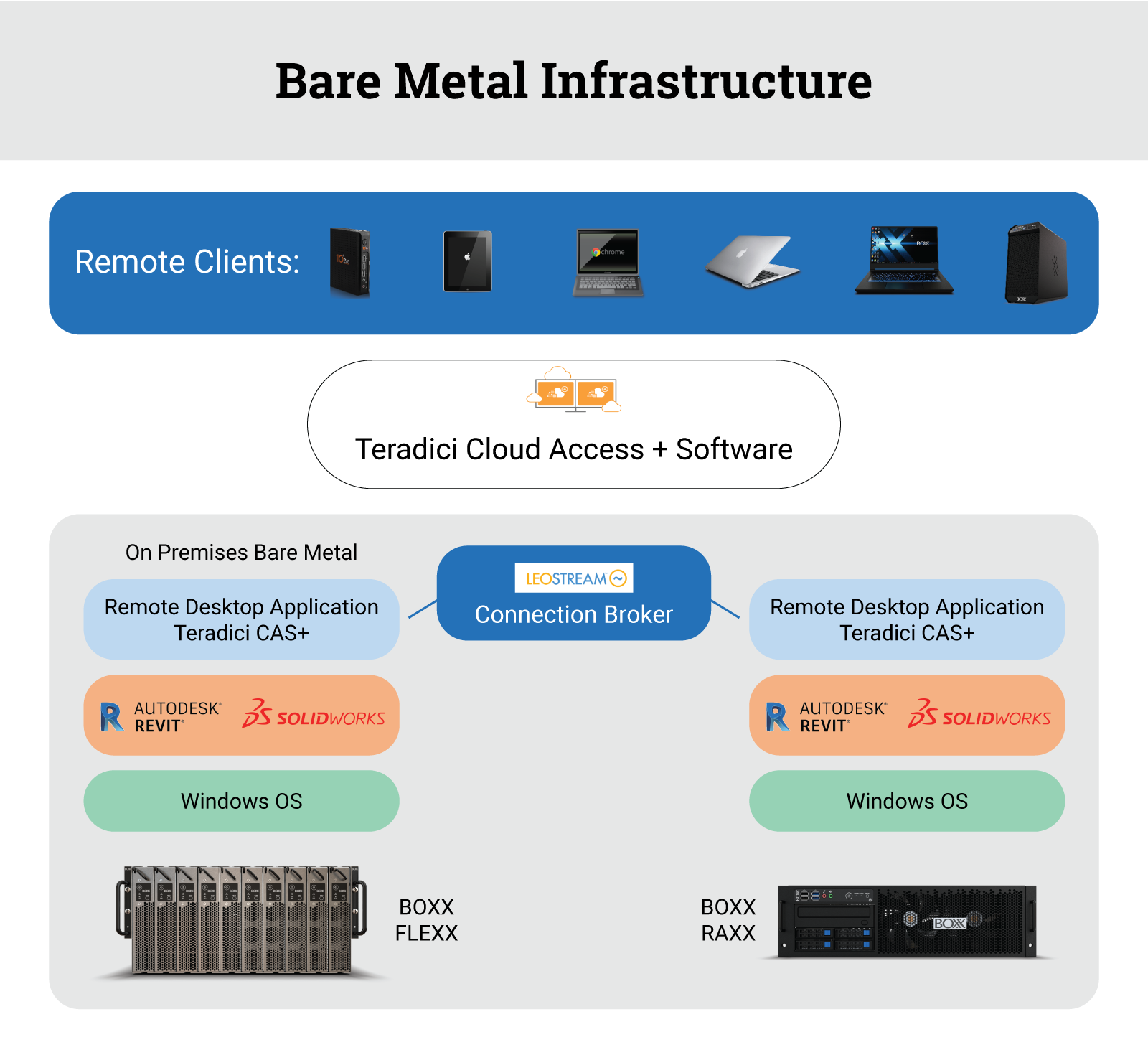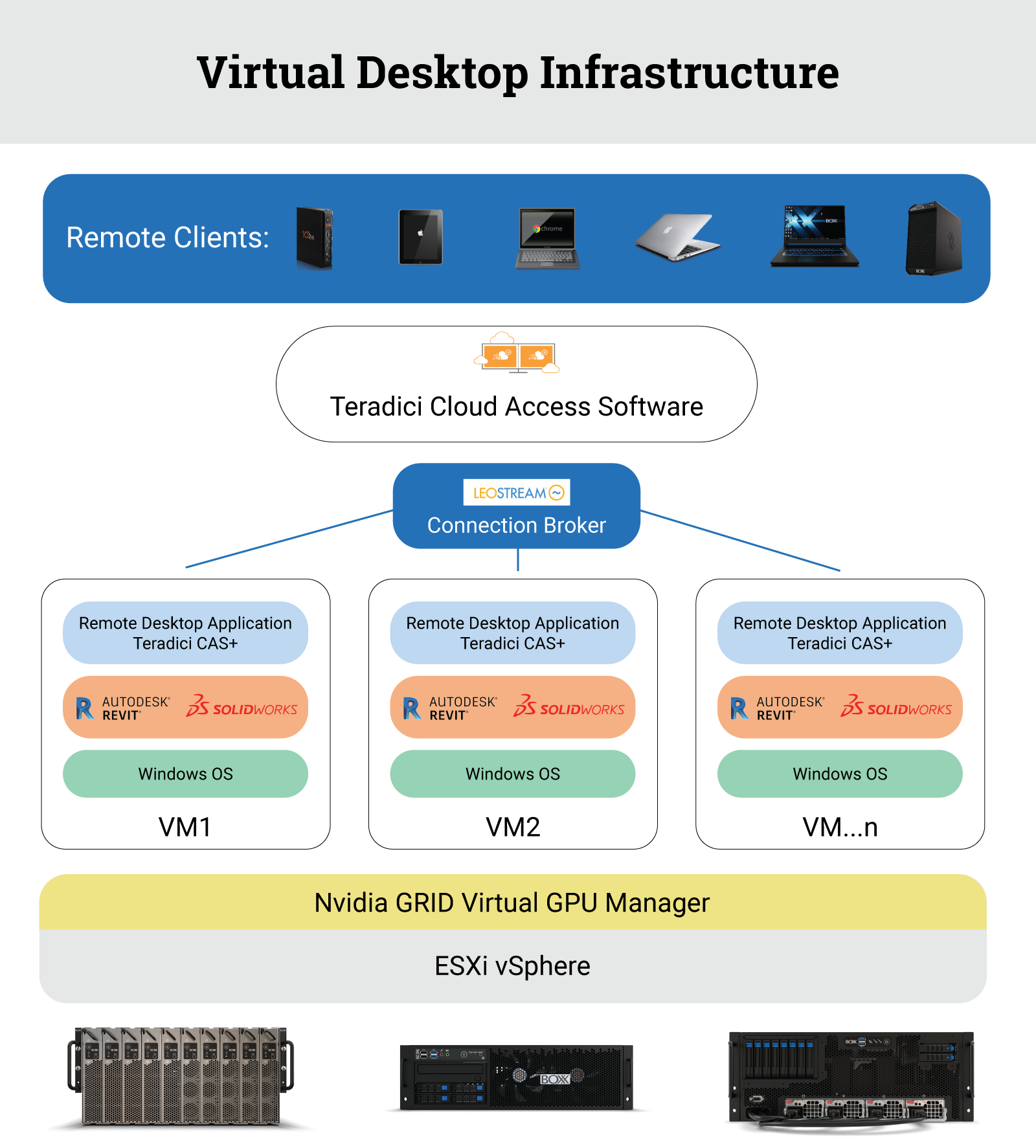
Published June 24, 2021 by John Vondrak
Tags: Revit Solidworks Advisory
Should My Organization Use VDI or Remote Workstations? Part 1
One of the constants of technology discussions is that just as there is a decent amount of factual information on a particular topic, there is typically an equal or greater amount of misinformation. For this blog, the subject in question is remote workstations vs. virtual desktop infrastructure (VDI) so let’s begin to understand the differences and clear up misconceptions by looking at these two graphics.


VDI vs. Remote Workstation
First of all, you don’t need VDI to attach remote workstations. A remote workstation is one to one (or bare metal), whether it’s a desk side tower, laptop, or rack mounted system. By contrast, VDI is one to many and is typically rack mounted servers, although it can be a desk side workstation. Both remote workstations and VDI can accessed on premise or remotely and require remote client software running on an IOS, Android, Tablet, Chromebook, Zero Client, Thin Client, Laptop, or Desktop. In addition, both need a connection broker to serve as a traffic director to manage the pool of desktop resources and users. It can also provide an additional security gateway.
In terms of timelines and complexity of implementation, it should be noted that bare metal is usually faster to implement as VDI solutions require more configuration. Regardless of choice, you also need to consider your existing IT Infrastructure:
- IT expertise (software and hardware)
- Physical space (data center)
- Power requirements
- Cooling requirements
- Desk side workstations
- Cloud experience/integration
- Bandwidth
Along with that, take into account the location of your users (remote work from home, satellite offices, field workers), your organization’s performance goals (workload dependent creators/power users, as well as the number of task users), and lastly, your budgetary goals. Speaking of budgetary goals, if you have under $4000 per user, a bare metal system is generally more cost effective. If you have over $4000 to spend per user, the solution is VDI.
This leads us to CAPEX vs. APEX. Your businesses has a variety of expenses which you likely simplify and organize under capital expenditures (CAPEX) and operating expenses (OPEX). CAPEX are major purchases a company makes that are designed to be used over the long term, while OPEX are the day-to-day expenses a company incurs to keep its business operational. So what’s this have to do with remote workstations vs. VDI? Well, it could determine whether you purchase bare metal or go with leasing a cloud-based computer instance.
Which BOXX is Right for My Workflow?
There’s more to cover in the second part of this blog like the parts of both VDI and remote workstations, as well as hybrids, but since this is a BOXX Blog, I’ll close Part 1 with a brief rundown of available BOXX products based on your total number of users.
Less than 20 users: FLEXX or RAXX
20+ Power users: FLEXX or RAXX VDI (BOXX Cloud)
20+ Task workers: RAXX VDI
Combination of power users and task workers: FLEXX, RAXX, RAXX VDI (BOXX Cloud)
There’s more vital information to follow, so be on the lookout for Should My Organization Use VDI or Remote Workstations? Part 2.
